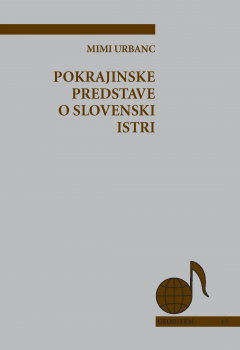Pokrajinske predstave o slovenski Istri
A cultural landscape is simultaneously a complex phenomenon and a process; it is a medium and a result of human activities and perception. This monograph is based on a postmodern view of the landscape and it understands the landscape not only as a physical phenomenon, but especially as a social and cultural document. Reading this document discloses the layers of meaning and processes that comprise it. This study examines the understanding and perception of the spatial effects from the history of Slovenian Istria in the twentieth century. It does not deal with direct changes in cultural landscape features, but rather with people’s relationship to them, and so social representation theory is used to represent landscape as a complex phenomenon. The focus is on representations of the landscape and history, such as their appearance in various literary, professional, and scholarly texts. Any literature can be a source for scholarly study and can enable the creation of new geographical knowledge and awareness. This study is constructed on the metaphor “the landscape is a text" that is written or shaped by society. This text can be read and interpreted by both scholars and those that use the landscape. The landscape is no longer the thing we see; it is a construct of this world. The empirical section traces the processes of grounded theory using ATLAS.ti software; 147 texts were analyzed, totaling 3,344 pages or 6,189,564 characters. More than 1,000 concepts were coded and then combined into categories revealing a diverse social conception of Istria’s cultural landscape and landscape dynamics, expressing the close interconnectedness of the material and intangible spheres, as well as their underlying processes. The result is nine aspects of the landscape: the landscape as a natural environment, the landscape and links with neighboring areas, the landscape as a living source, belonging to the landscape, alienation from the landscape, the landscape as a rural idyll, the gendered landscape, the landscape as accessibility and mobility, and the landscape as a rural-urban relation. The following conclusions were reached based on a thorough synthesis of the nine aspects mentioned above:
- The driver of development in rural Istria is the relationship between town and countryside, which is also an expression of the power relationship between the two.
- The political situation after World War II, the implementation of communism, and the isolation of Slovenian Istria from Trieste caused the greatest changes to the landscape.
- Border changes and the accompanying social and political conditions had a decisive impact on people’s lives, which is outwardly expressed in the cultural landscape. The changes were so sudden and wide-ranging that people did not have time to internalize them, which created feelings of alienation and subsequently led to an identity crisis.
- Borders cut deeply into Istrians’ everyday lives, and so they led to negative reactions.
- Time is a significant factor in cultural landscapes because changes have a temporal dimension.
Downloads

Series
License

This work is licensed under a Creative Commons Attribution-NonCommercial-NoDerivatives 4.0 International License.
